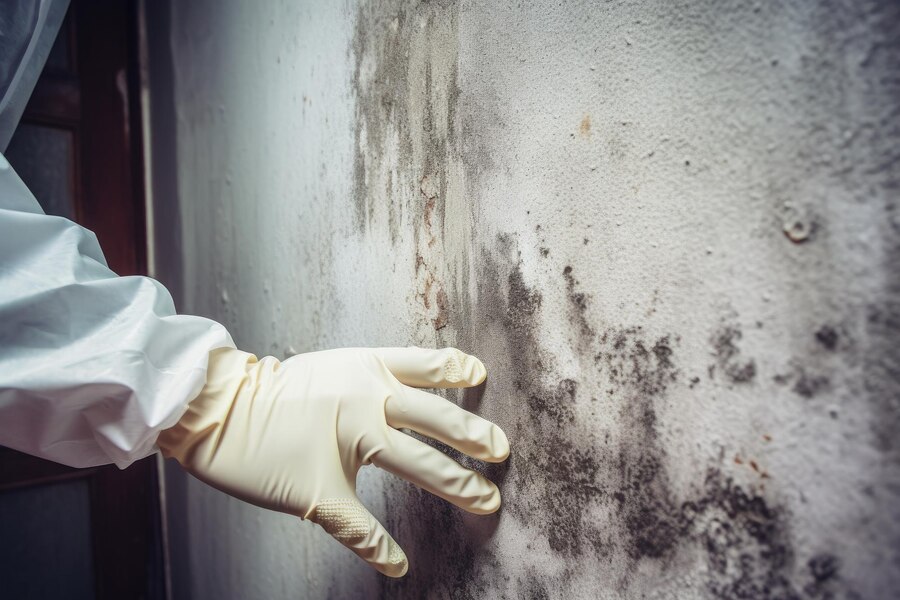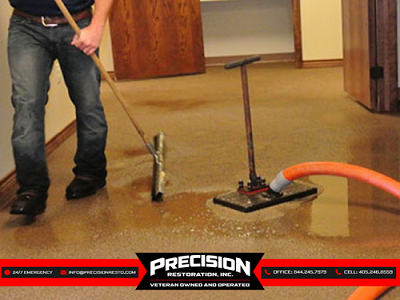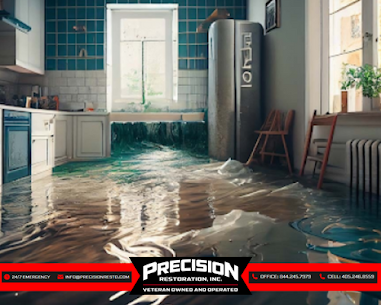Water damage can be a homeowner’s nightmare, not just because of the immediate destruction it causes but also due to the lingering threat of mold growth. Mold can start to develop within 24 to 48 hours after water damage, making it crucial to act quickly to prevent its growth. This article will guide you through the essential steps to prevent mold after water damage restoration, ensuring your home remains safe and healthy.
Act Quickly
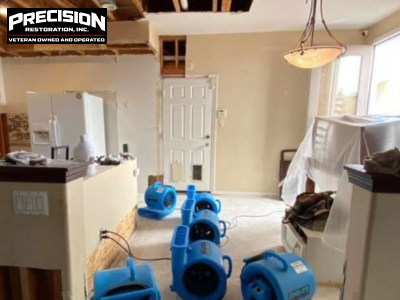
Time is of the essence when dealing with water damage. The longer water sits in your home, the higher the chance that mold will start to grow. Begin the water damage restoration process as soon as possible by removing any standing water and drying out affected areas. If the damage is extensive, consider hiring a professional water damage restoration service to ensure thorough and prompt action.
Ensure Safety First
Before addressing water damage, ensure that it is safe to do so. Water and electricity are a dangerous combination, so if there is standing water, turn off the electricity to the affected area to avoid electrical hazards. If the water damage is extensive or if you’re unsure about the safety of the situation, evacuate the area and contact professionals immediately.
Stop the Water Source
The first step in any water damage situation is to stop the source of water if possible. Whether it’s a burst pipe, a leaking roof, or flooding, identify and stop the flow of water. If it’s a plumbing issue, turn off the main water supply to your home. For roof leaks or external sources, temporary solutions like tarps or sandbags can help until professional help arrives.
Remove Standing Water
Once the water source is under control, remove standing water as quickly as possible. The longer water sits, the more damage it can cause to floors, walls, and personal belongings. Use mops, towels, buckets, or a wet/dry vacuum to remove as much water as you can. For larger volumes of water, especially in basements or expansive areas, professional-grade pumps may be necessary.
Protect Your Belongings
Water can cause immediate and irreversible damage to furniture, electronics, and personal items. Remove items from the affected area to prevent further damage. Place them in a dry, safe location. If certain items are already wet, try to dry them out as quickly as possible. For instance, place books or papers between dry towels and lay them flat to reduce warping.
Document the Damage
Before beginning extensive clean-up or repair efforts, document the damage with photos and videos. This step is crucial for insurance purposes and will help you when filing a claim. Ensure that you capture all areas of damage, including floors, walls, ceilings, and personal belongings. Keep receipts of any emergency services or items purchased during the restoration process.
Thoroughly Dry Affected Areas
Drying out the affected areas is one of the most critical steps in preventing mold growth. Here’s how to do it effectively: Use Dehumidifiers: Dehumidifiers help reduce moisture levels in the air, making it harder for mold to thrive. Place them in the most affected areas and run them continuously until the area is completely dry. Increase Air Circulation: Use fans to increase air circulation, helping to speed up the drying process. If possible, open windows and doors to allow fresh air to flow through the space. Remove Wet Materials: Carpets, rugs, insulation, and other porous materials that have been soaked with water can harbor mold. Remove and discard these materials if they cannot be thoroughly dried within 24 to 48 hours. Use Wet/Dry Vacuums: These vacuums are particularly useful for removing water from carpets, floors, and other surfaces. Ensure that the vacuumed areas are dried immediately afterward.
Clean and Disinfect the Area
After drying, it’s important to clean and disinfect all affected surfaces. Mold spores are microscopic and can remain on surfaces even after the water is gone. Use a mixture of water and detergent or a commercial disinfectant to clean walls, floors, and other surfaces. For areas that were heavily soaked, consider using a stronger mold-killing solution, such as bleach (diluted with water) or a specialized mold cleaner.
Monitor Humidity Levels
Even after the initial drying process, it’s important to keep an eye on the humidity levels in your home. Mold thrives in humid environments, so keeping indoor humidity below 60% is essential. You can monitor humidity levels using a hygrometer, which is a relatively inexpensive device available at most hardware stores.
Inspect for Hidden Moisture
Water can seep into hidden areas, such as behind walls, under floors, and in crawl spaces, where it can remain undetected and provide a perfect environment for mold growth. Use moisture meters to detect hidden moisture, and if necessary, consider removing sections of drywall or flooring to check for trapped moisture. If hidden moisture is found, it needs to be dried thoroughly, possibly with the help of professional drying equipment.
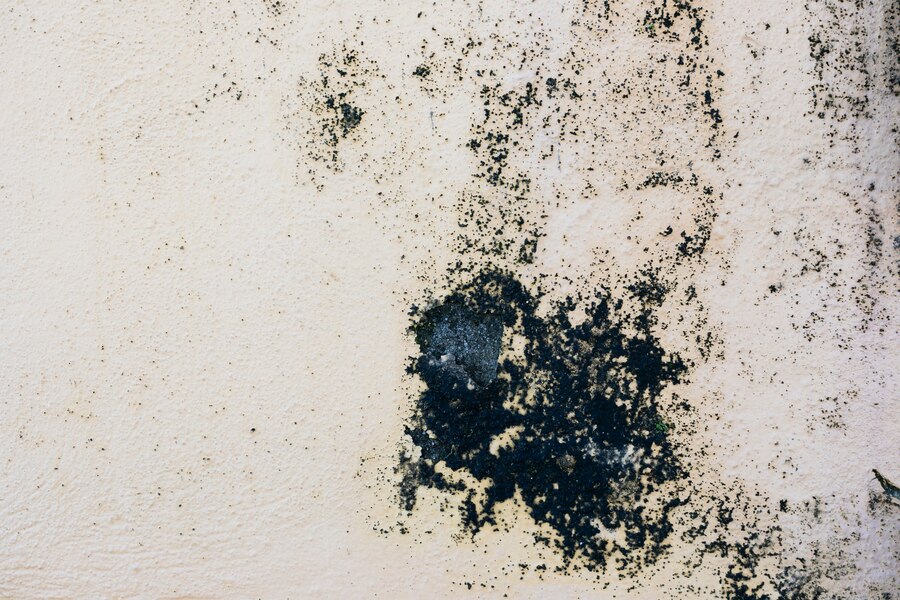
Ensure Proper Ventilation
Proper ventilation is key to preventing moisture buildup in your home. Ensure that areas like bathrooms, kitchens, and laundry rooms are well-ventilated, as these areas are prone to high humidity. Installing exhaust fans can help expel moist air and reduce the risk of mold growth.
Check Your Home's Exterior
Water can enter your home through leaks in the roof, walls, or foundation. Inspect your home’s exterior for signs of damage, such as cracks, missing shingles, or gaps around windows and doors. Repair any issues promptly to prevent water from entering and causing future damage.
Be Proactive with Preventive Measures
Once your home is dry and mold-free, take steps to prevent future mold growth: Install a Sump Pump: If your home is prone to flooding, a sump pump can help remove water before it causes damage. Use Mold-Resistant Products: When repairing or renovating, consider using mold-resistant drywall, paint, and insulation. Maintain Gutters and Downspouts: Keep gutters clean and ensure downspouts direct water away from your home to prevent water from pooling near the foundation.
Regularly Inspect and Maintain Your Home
Even after taking all the right steps, regular inspection and maintenance are key to preventing mold. Periodically check areas that are prone to moisture, such as basements, crawl spaces, and attics, for signs of water damage or mold. Promptly address any issues you find to keep mold at bay.
Conclusion
Preventing mold growth after water damage restoration is crucial to ensuring the long-term health and safety of your property. By acting quickly, thoroughly drying the affected areas, and using the right preventative measures, you can significantly reduce the risk of mold development. Remember, mold can start growing within 24 to 48 hours, so time is of the essence.
At Precision Restoration, Inc., we understand the challenges that water damage can bring, especially in the humid conditions often experienced in Oklahoma City. Our expert team is dedicated to helping you restore your property and prevent future issues like mold. If you’re in need of professional assistance or have any questions about our services, we’re here to help. Protect your home and health by trusting the restoration experts at Precision Restoration, Inc.

